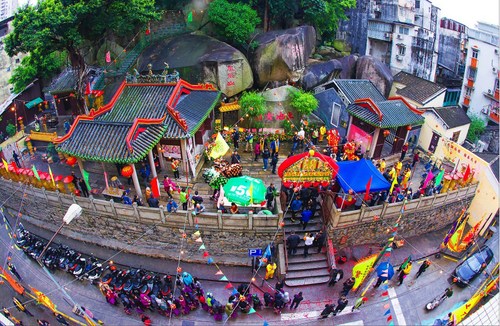
In order to identify, recognize and safeguard Macao’s intangible cultural heritage, the Cultural Affairs Bureau (IC, from the Portuguese acronym), in accordance with the provisions of the Cultural Heritage Protection Law, drew up and officially announced the inventory of intangible cultural heritage today (22 September). Currently, a total of 15 elements are included in the inventory, namely Yueju Opera (Cantonese Opera), Herbal Tea Brewing, Woodwork – Religious Figure Carving, Cantonese Naamyam (Narrative Songs), Taoist Ritual Music, Festival of the Drunken Dragon, Belief and Customs of A-Ma, Belief and Customs of Na Tcha, Patuá Theatre, Macanese Gastronomy, Belief and Customs of Tou Tei, Belief and Customs of Chu Tai Sin, the Craft of Bamboo Scaffolding, the Procession of the Passion of Our Lord the God Jesus and the Procession of Our Lady of Fatima.
Pursuant to the Cultural Heritage Protection Law No. 11/2013, the inventory is the basis for the safeguard of the intangible cultural heritage. Therefore, IC includes in the inventory the existing 10 elements of intangible cultural heritage and the 5 elements proposed this year for initiation, allowing the above-mentioned heritage to be safeguard by the relevant law.
Among the 5 proposals for initiation this year, Belief and Customs of Tou Tei Belief and Customs of Chu Tai Sin and the Craft of Bamboo Scaffolding were proposed by local communities; while the Procession of the Passion of Our Lord the God Jesus and the Procession of Our Lady of Fatima were proposed by IC. The processions are part of the IC’s surveys and studies of intangible cultural heritage and they possess relatively complete research materials and arguments, as well as suitable conditions in various aspects. IC analyzed and concluded that the expressions, conservation status and cultural value of the above-mentioned elements met the requirements for inventory according to Article 74 of the Cultural Heritage Protection Law. After consulting the Cultural Heritage Committee, IC included these elements in the respective inventory within the competence bestowed under Article 77 of the same law.
In the future, IC will continue to perform surveys and studies of Macao’s intangible cultural heritage and update the inventory, as well as to inscribe onto the “List of Intangible Cultural Heritage” qualified elements from the inventory, in accordance with the provisions and procedures established in the Cultural Heritage Protection Law, in order to safeguard and transmit Macao’s valuable intangible cultural heritage. In addition, should other public departments, communities, groups or individuals wish to propose for initiation, they may submit their proposals to IC, pursuant to the above mentioned law.
For more information, please visit the website of IC’s Cultural Heritage of Macao at www.culturalheritage.mo, to get to know more about the intangible cultural heritage elements included in the inventory as well as the provisions of the Cultural Heritage Protection Law in regards to the inventory.


